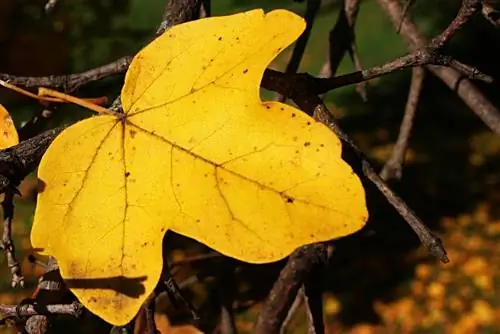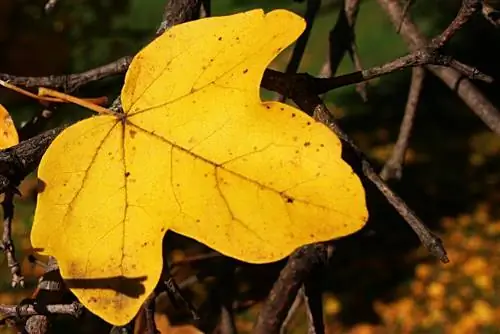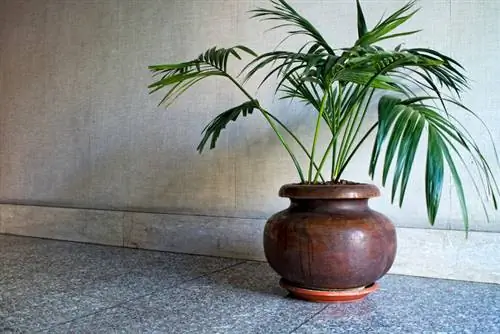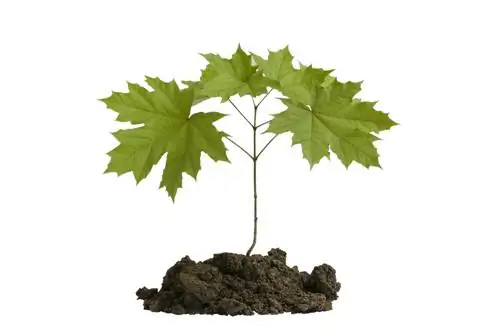- Author admin [email protected].
- Public 2023-12-16 16:46.
- Last modified 2025-06-01 06:02.
A native maple tree can easily be distinguished from other tree species by its palmate, lobed leaves. Identifying individual maple species is becoming more difficult. Do you want to shine with in-depth knowledge on your next walk and call every maple tree by name? Then delve into this guide to the distinguishing features of maple leaves.

How can different maple species be distinguished?
Maple trees can be distinguished by their leaves: sycamore has 5-lobed, serrate leaves; Norway maple has 5- to 7-lobed, smooth-edged leaves with tips; Field maple is characterized by 3- to 5-lobed, smooth leaves with a velvety underside. Asian maple species have deeply slotted, toothed leaves.
Mountain, Norway and field maple - distinctive leaf shapes
The three most common maple species in our forests are well known to us thanks to their spectacular autumn color. Sycamore maple (Acer pseudoplatanus), Norway maple (Acer platanoides) and field maple (Acer campestre) can be clearly distinguished from one another based on their characteristic leaf shapes:
- Sycamore maple: 5-lobed, serrated leaf edge, dark green above, gray-green below, 20 cm long, 15 cm wide
- Norway maple: 5 to 7 lobes, protruding tips, up to 18 cm long, extra long petiole, smooth leaf edge (never sawn)
- Field maple: double-lobed, green, 3 to 5-lobed, smooth leaf edge, velvety hairy underneath
European maple species have passed on their beautiful leaves to the resulting varieties. The popular globe maple Globosum cannot deny the Norway maple as its ancestor. The yellow speckles on the foliage of the Leopoldii variety do not yet reveal its parentage. The 5-lobed palm shape of the leaves reveals beyond a doubt that the sycamore maple was the inspiration here.
Slit leaves reveal Asian maple species
Asian maple species are very popular because they thrive in less space than their European counterparts. Deeply slotted leaves, which are composed of 5 to 11 tapering lobes, are characteristic of the numerous varieties. The foliage is serrated at the edge, which prevents any confusion with European maple trees.
A closer look requires the identification of the Japanese maple, whose compact varieties show off in pots on balconies and terraces. The leaves have 5 lobes and are dentate, which makes it difficult to distinguish them from native maple species. The key identifying feature is the red petiole, which dispels all doubts.
Tip
During the leafless period, some maple species reveal their name by their bark. Japanese maple Sangokaku boasts coral-red shoots in winter. Sycamore maple can be distinguished by its grey-brown, rough and scaly bark. The bark on Norway maple shows distinctive longitudinal cracks. Light longitudinal stripes in brown bark are typical for Japanese maple.






